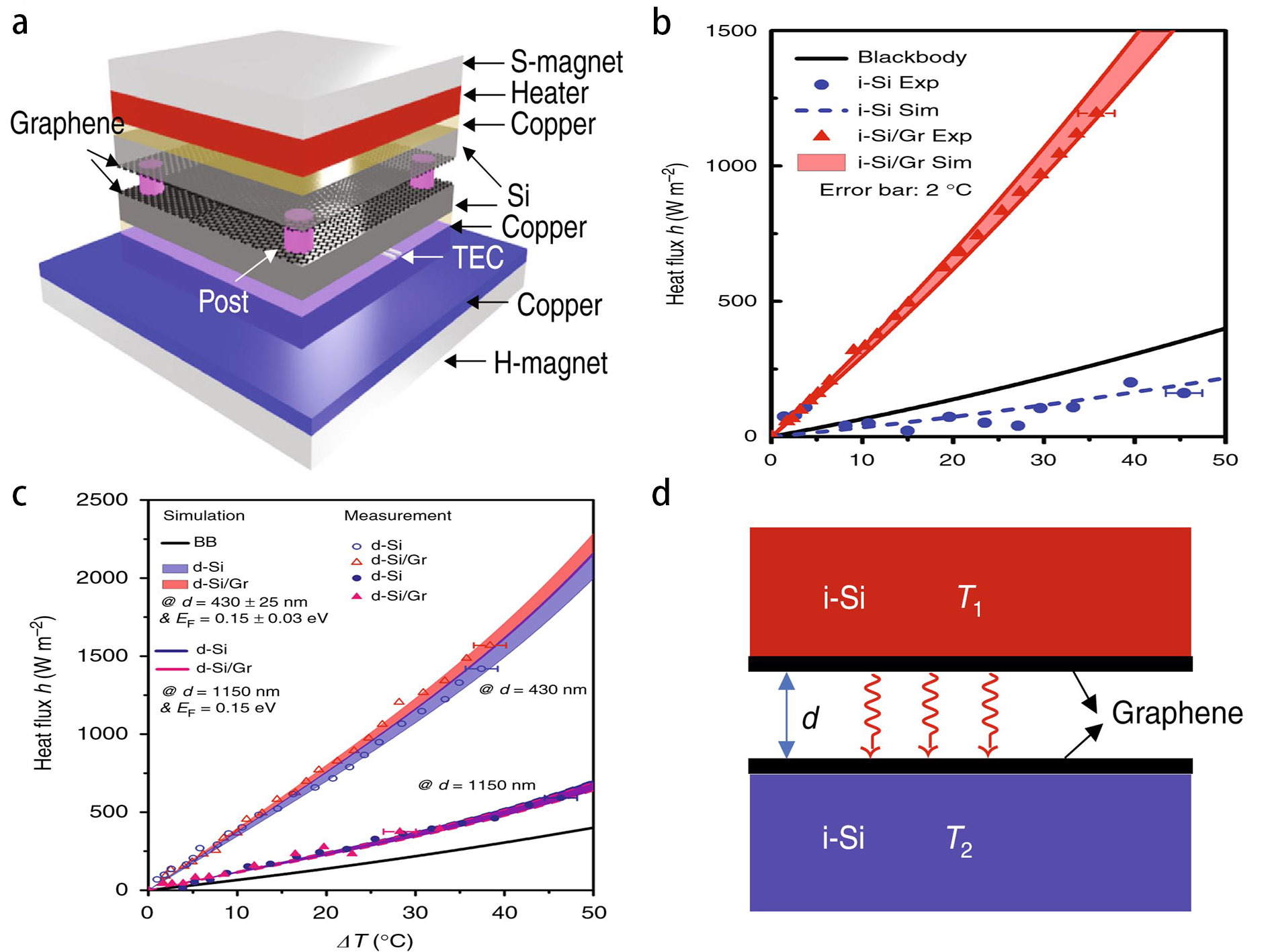Recently,Prof. MA Yungui’s group from College of Optical Science and Engineering (COSE)of Zhejiang University (ZJU) has achieved great progress in the research of nearfield thermal radiation. Their results were published on Nature Communications,titled “Observing of the super-Planckian near-field thermal radiation betweengraphene sheets”. (DOI: 10.1038/s41467-018-06163-8)
It iswell known that objects with temperature radiate electromagnetic waves, whileblack body has the largest heat radiation efficiency in the far field. However,when the distance between objects is much smaller than the thermal wavelength,the near-field tunneling effect of the evanescent wave photon occurs. Since theevanescent wave has a much higher energy density, theoretically, it can breakthe Planck blackbody radiation limit and obtain an extremely high near-fieldenergy transfer efficiency, which has important application potentials inthermophotovoltaic and thermal energy management. However, the near-fieldthermal radiation experiment is very challenging. It requires precise controlof the physical spacing of the thermal radiation surface and the extraction ofweak radiation signals in a high vacuum environment, which is also the currentresearch focus. Up to now, the law of near-field thermal radiation between thesurface of classical media such as silicon and silicon dioxide has been well verified.The group's innovative work is to design and manufacture a portable near-fieldthermal radiation test system based on magnetic attraction (Figure 1a), and forthe first time, they use it to characterize the near-field heat transferbetween graphenes (sample area: 2 cm x 2 cm).Based on the intrinsic siliconsubstrate, they used the near-field coupling effect of the graphene plasmonsand successfully obtained 4.5 times the transfer efficiency of Planck blackbodyradiation at 450 nm spacing(Figure 1b).The results not only confirm thevalidity of the classical thermal fluctuation dissipation theory in dealingwith two-dimensional single-atom materials such as graphene, but alsoindirectly confirm the infrared response characteristics of graphene surfaceplasmons.

Figure1. Near-field heat transfer between graphene-silicon heterostructures. (a)Schematic diagram of the test device; (b) heat transfer power between grapheneand intrinsic silicon; (c) heat transfer power between graphene-doped silicon;(d) graphene-silicon thermal photovoltaic cell structure
Based onthe above experiment, they further used a highly doped silicon substrate whichgives rise to a Schottky junction effect between silicon and graphene andstudied the change of near-field thermal radiation due to the modulation of theFermi level of graphene. The experimental results are in good agreement withthose predicted by the thermal fluctuation dissipation theory (Figure 1c). Atthe end of the paper, they discussed the application potential of the graphene-siliconheterojunction structures in near-field thermal photovoltaic cells (Figure 1d).
Thefirst author of this paper is the postgraduate student YANG Jiang and Prof. Mais the corresponding author. The work is financially support by the NationalMajor Research Program Key Project, the Natural Science Foundations of Chinaand Zhejiang Province.

